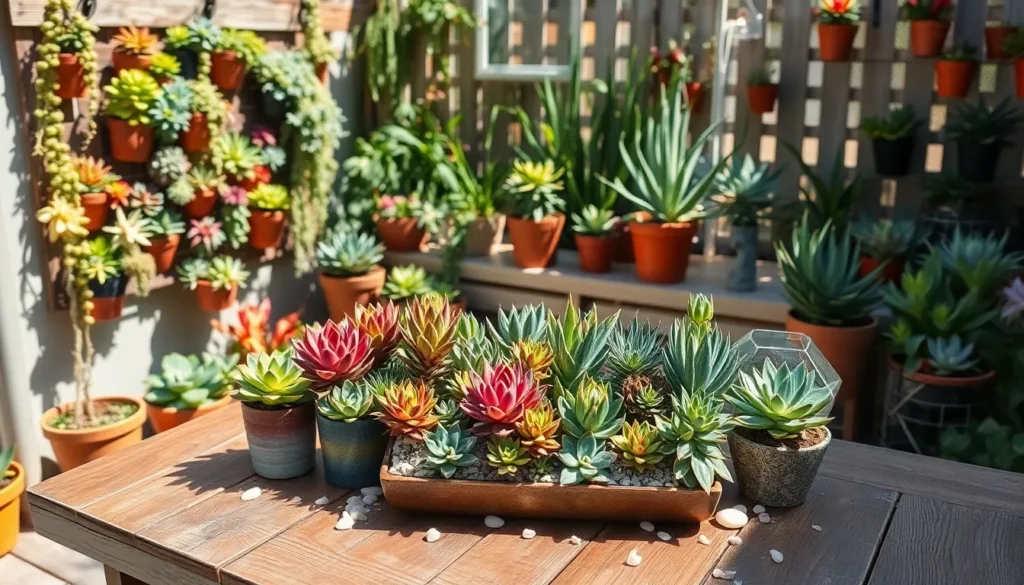Welcome to the enchanting world of succulents, where simplicity meets beauty in the most delightful way. Whether you’re just beginning your gardening journey or have years of experience under your belt, learning how to grow succulents in containers can be a rewarding endeavor that adds charm and character to any space.
These resilient plants, with their vibrant colors and unique textures, bring a touch of the exotic into your home or garden. In this article, you’ll discover the essential tips and tricks to ensure your succulents thrive in containers, from selecting the perfect pot to mastering the art of watering.
Growing succulents in containers isn’t just about aesthetics; it’s about creating a low-maintenance oasis that nurtures your creativity and green thumb. You’ll learn how to choose the right soil mix, understand light requirements, and even tackle common challenges with confidence.
Get ready to transform your living spaces with these versatile plants that offer endless possibilities for arrangement and style. By the end of this guide, you’ll be equipped with the knowledge and inspiration to cultivate a stunning succulent collection, no matter your level of gardening expertise.
Select Suitable Succulent Species
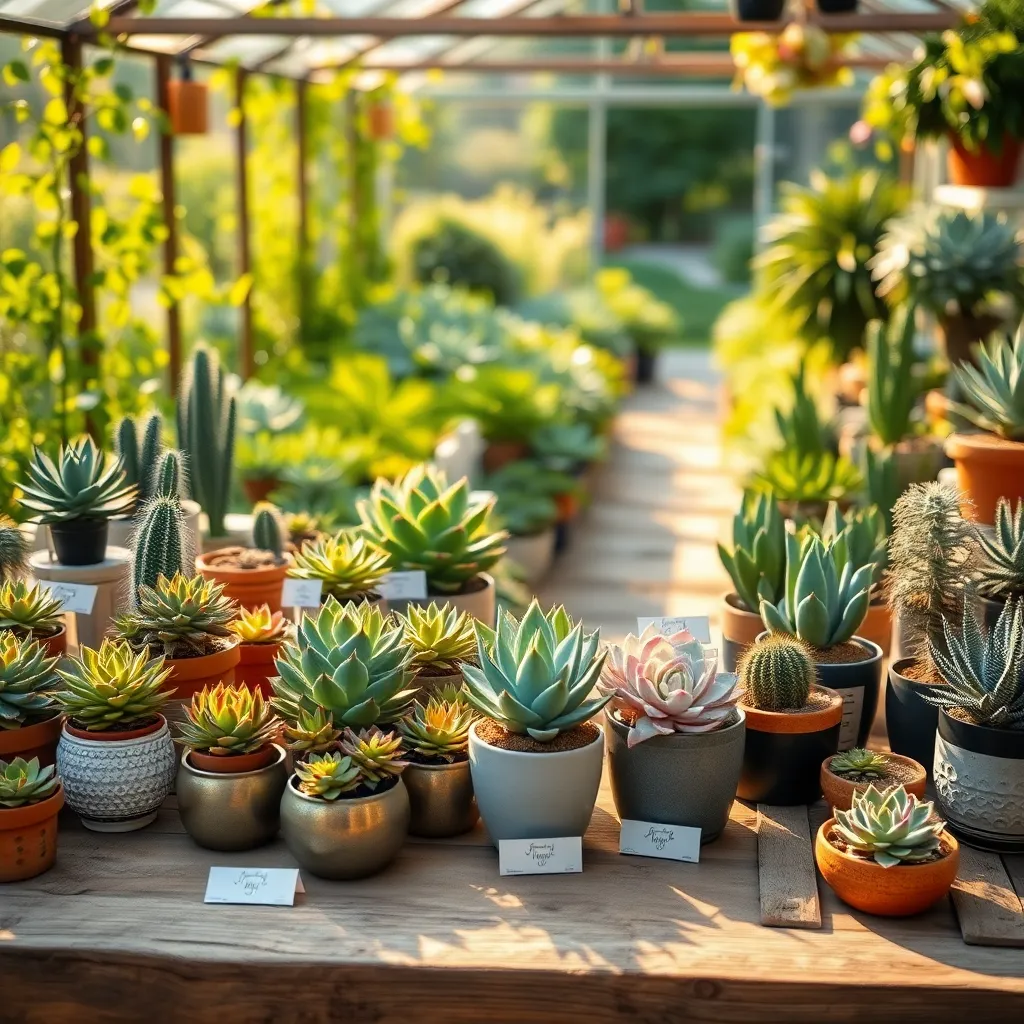
When selecting succulents for containers, it’s important to consider species that thrive in confined spaces. Jade plants (Crassula ovata) are a popular choice due to their adaptability and minimal care needs.
Opt for succulents that have a compact growth habit, which makes them ideal for container gardening. Echeverias are particularly suited for this, as they form neat rosettes and come in a variety of colors.
Beginners might find Aloe vera to be an excellent starting point, as it’s forgiving of occasional neglect and offers medicinal benefits. Ensure your Aloe vera receives plenty of bright, indirect sunlight and water it only when the soil is completely dry.
For those looking to experiment, try mixing different species in one container to create a miniature succulent garden. Consider combining succulents like Haworthia, which requires similar care conditions, in terms of light and watering, as Echeverias.
- Use a well-draining potting mix, such as a cactus or succulent blend, to prevent root rot.
- Water thoroughly but infrequently, allowing the soil to dry out completely between waterings.
- Place your container in a location where it can receive at least six hours of indirect sunlight daily.
Choose Well-Draining Containers

Choosing well-draining containers is crucial for the health of your succulents. Succulents are prone to root rot if they sit in waterlogged soil, so ensuring your container has drainage holes is essential.
When selecting a container, opt for materials like terra cotta or unglazed ceramic, which allow moisture to evaporate. These materials help maintain the right moisture balance by naturally wicking away excess water, reducing the risk of overwatering.
Consider the size of the container relative to the succulent’s root system. A container that is too large can retain more moisture than necessary, leading to potential root issues; therefore, choose a pot that is just slightly larger than the root ball.
For an additional drainage boost, line the bottom of your container with a layer of coarse gravel or small stones. This creates a space for excess water to collect away from the roots, providing an extra level of protection against water retention.
Prepare Cactus Potting Mix
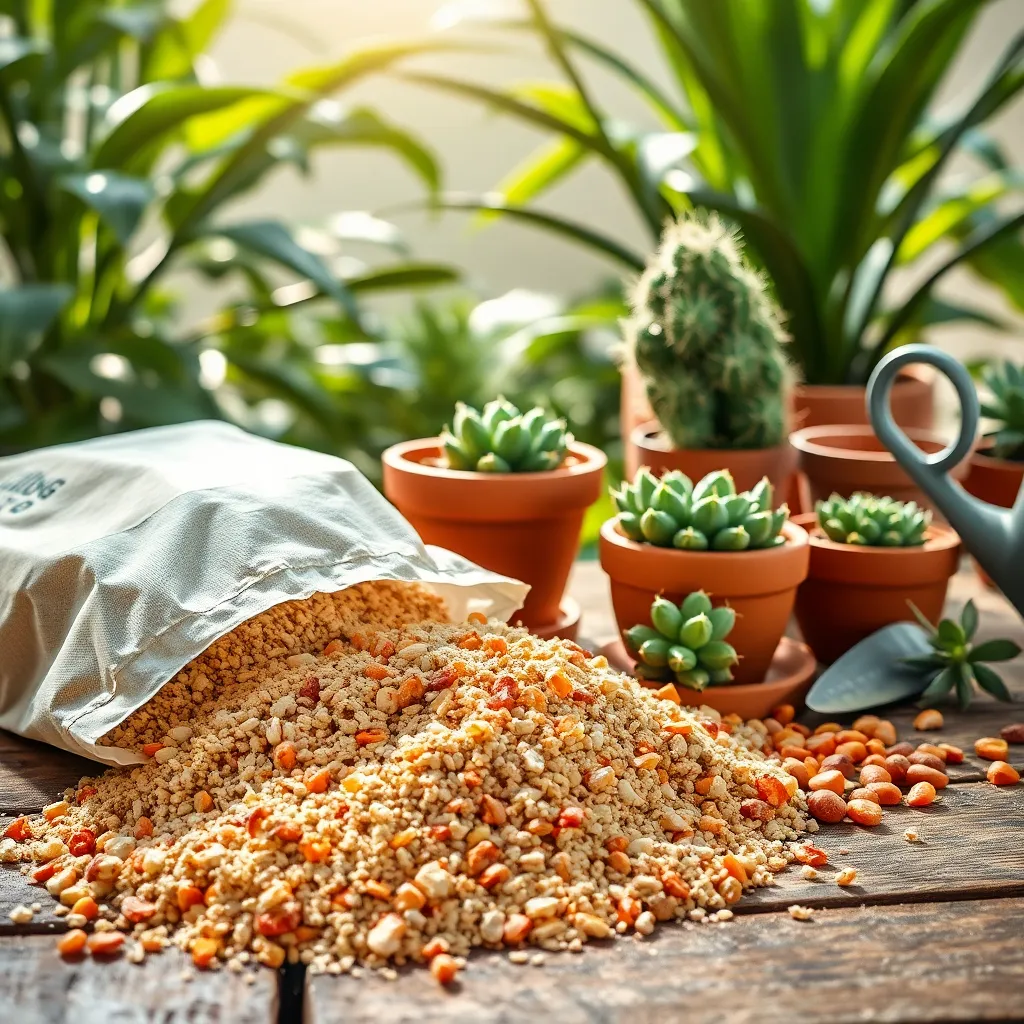
To create the perfect home for your succulents, preparing an ideal cactus potting mix is crucial. Start by choosing a base of regular potting soil, but remember to avoid those with added fertilizers that can overwhelm succulents.
Next, enhance drainage by mixing in coarse sand or perlite. These amendments help prevent root rot, which is a common issue with succulents when moisture is retained too long.
For a more advanced mix, consider adding crushed granite or pumice. These materials provide additional aeration and mimic the natural environment of succulents, promoting healthier growth.
Mix the components in a large container, ensuring they are thoroughly combined. A well-blended mix ensures consistent drainage and supports the succulent’s root system effectively.
Position for Optimal Sunlight
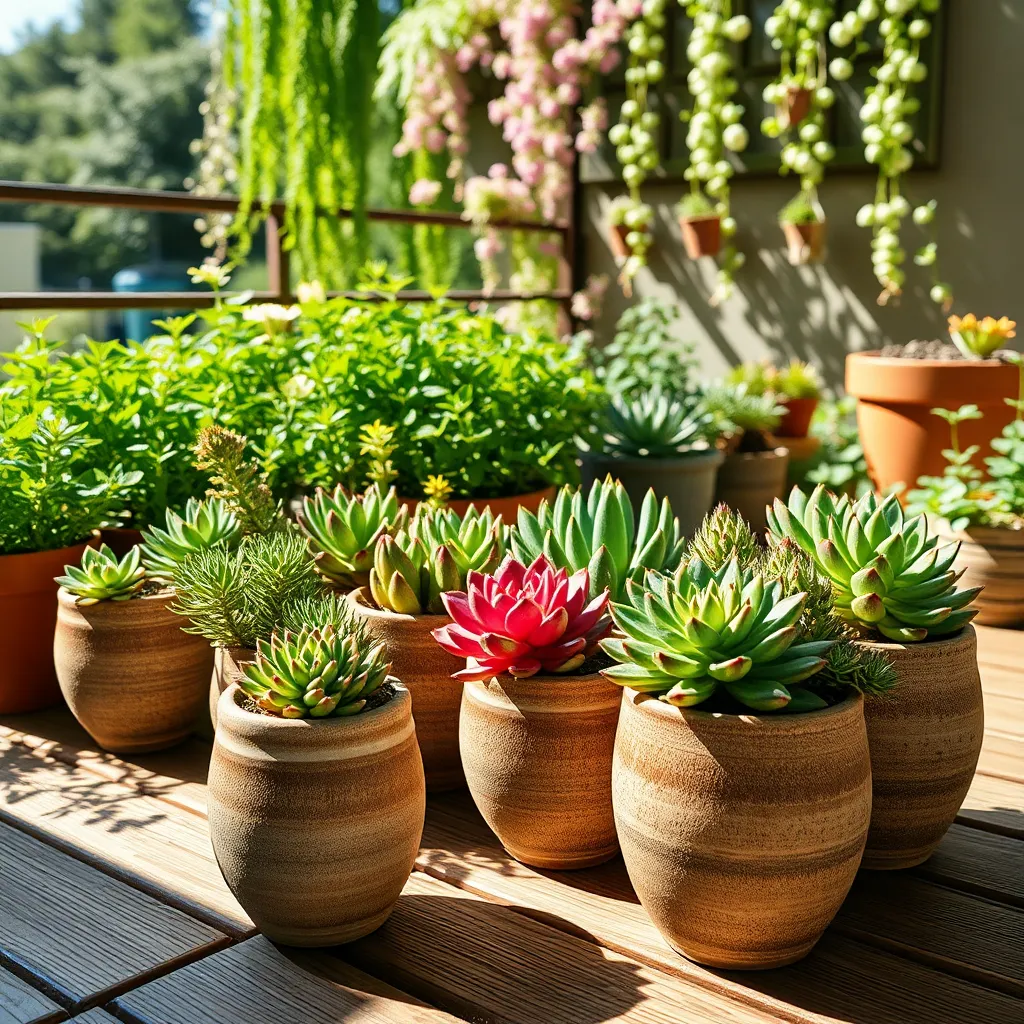
Positioning your succulents for optimal sunlight is crucial for their growth and health. These resilient plants thrive in bright, indirect light, so placing them near a south-facing window is ideal.
For those living in areas with intense sunlight, consider placing your succulents in a location where they receive morning sun and afternoon shade. This approach prevents them from burning, which can happen if they are exposed to too much direct sunlight.
It’s important to rotate your succulents regularly to ensure even growth, as they tend to lean toward the light source. Turning the container every few weeks encourages balanced development and prevents the plant from becoming lopsided.
If you’re growing succulents indoors, supplementing natural light with a grow light can be beneficial, especially during the shorter days of winter. LED grow lights are a good choice as they are energy-efficient and provide the spectrum of light that succulents need to thrive.
Water Sparingly and Monitor Growth
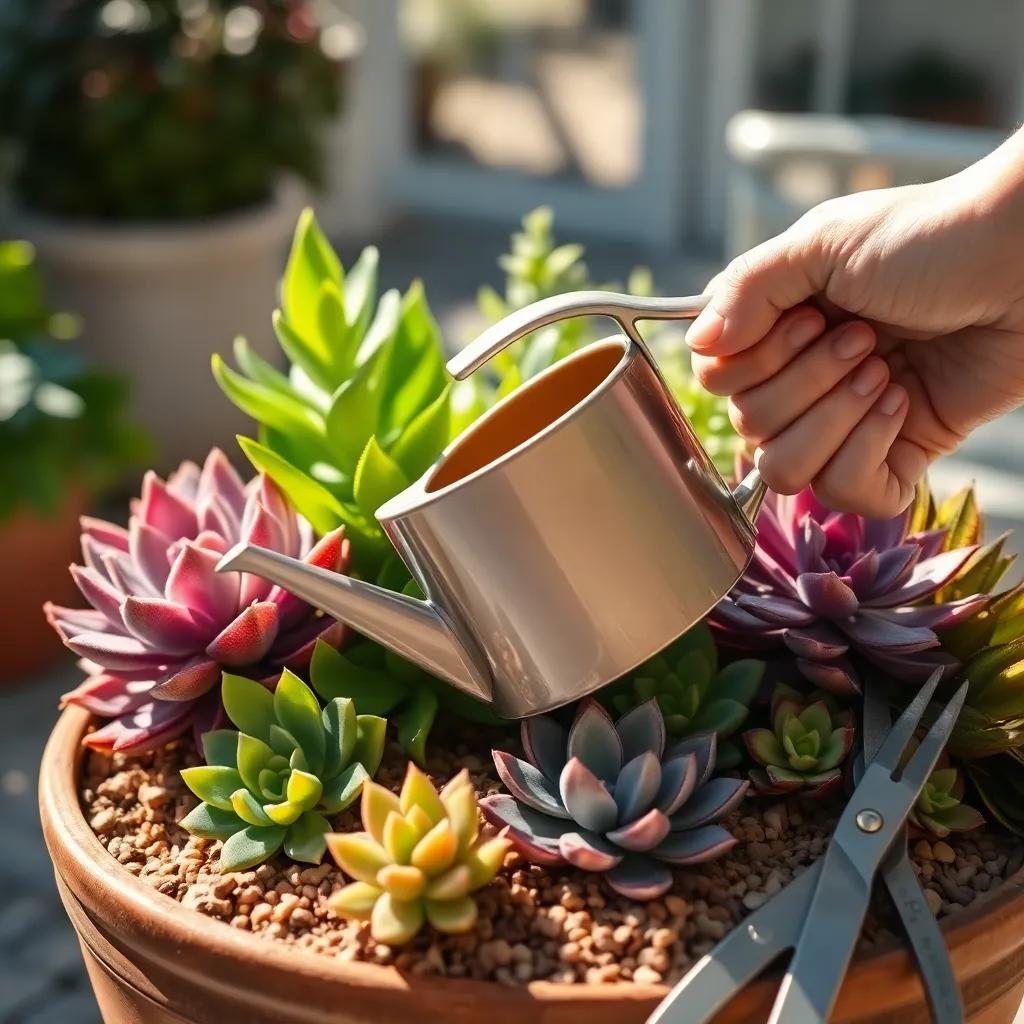
Succulents have a reputation for being drought-tolerant, but that doesn’t mean they should be neglected when it comes to watering. Water sparingly, typically once every week or two, depending on the climate and humidity of your area. Let the soil completely dry out between waterings to prevent root rot, which is a common issue among container-grown succulents.
It’s crucial to use a well-draining soil mix, such as one designed specifically for cacti and succulents, to ensure excess moisture doesn’t linger. If you’re mixing your own, combine regular potting soil with sand or perlite to enhance drainage. A layer of gravel at the bottom of the pot can also help improve drainage, preventing water from pooling at the roots.
Monitor your succulents closely for signs of overwatering, such as yellowing leaves or mushy stems. Conversely, under-watered succulents will appear shriveled or their leaves might start to wrinkle. By paying attention to these visual cues, you can adjust your watering schedule accordingly to meet the specific needs of your plants.
As your succulents grow, examine their overall health and make adjustments as needed. If you notice your succulents stretching toward the light, they may need more sunlight, which can also affect their watering needs. Some succulents might require more frequent watering during their active growing season, typically spring and summer, while reducing it in the dormant periods of fall and winter.
Conclusion: Growing Success with These Plants
In nurturing your succulents, you’ve not only learned to cultivate a thriving indoor garden but also uncovered valuable insights for nurturing relationships. First, you discovered the importance of starting with the right foundation, much like choosing the right soil for your plants. Then, you explored the significance of consistent yet gentle care, akin to regular communication in relationships. You also learned the value of giving space, paralleling how succulents thrive when not overcrowded, just like partners need independence. Understanding the role of patience during growth phases mirrors the patience required in nurturing relationships. Finally, recognizing the need for adaptability, just as succulents adjust to their environment, highlights the resilience necessary for enduring bonds.
As a next step, try applying these concepts by planning a small project or activity with your partner or loved ones, and observe how these principles enhance your connection. Remember, relationships, like gardens, flourish with ongoing attention and care. Save or bookmark this article to revisit these insights whenever you need a reminder. As you cultivate both your plants and your relationships, know that each effort sown today promises a more vibrant and fulfilling connection tomorrow. Embrace the journey, and watch your relationships reach new heights of success.

